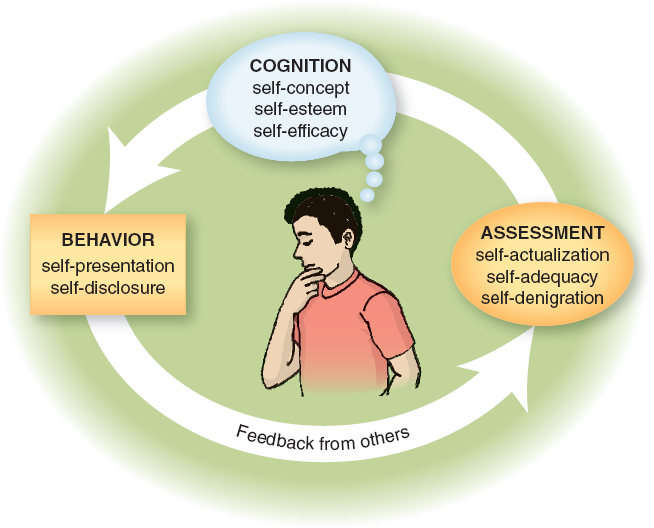Behavior: Managing Our Identities
As you’ve learned, you define yourself through your self-concept and your ideas about self-esteem and self-efficacy. But you also make decisions about how to share these internal viewpoints with others. This is manifested in your verbal and nonverbal behaviors.
We all have aspects of ourselves that we want to share and aspects that we would rather keep private. Many of the choices we make in our communication behavior, from the clothes we wear to the way we speak, are determined by how we want others to perceive us. In this section, we consider how we let the world know just who we think we are and how our communication with others can shape their perceptions of us.
Let’s examine the process illustrated in Figure 2.5 for a moment. At the core of this process is the self. The self has cognitions that consist of self-concept (knowing and understanding the self), self-esteem (evaluating the self), and self-efficacy (predicting the self’s success)—all of which we’ve discussed. These cognitions influence our verbal and nonverbal behaviors, which consist of self-presentation and self-disclosure, two terms we will explain soon. Our behavior generates feedback from others, which leads to our assessments of self-actualization, self-adequacy, and self-denigration. These judgments of our performance then affect our cognitions. As you read about self-presentation, self-disclosure, and feedback in the coming pages, refer to this illustration to remind yourself of the roles these play in your interactions with others.

Figure 2.5: FIGURE 2.5 THE SELF
Figure 2.5: The self is composed of our cognitions, our behavior, and our self-assessments. These factors work together to affect our communication.
